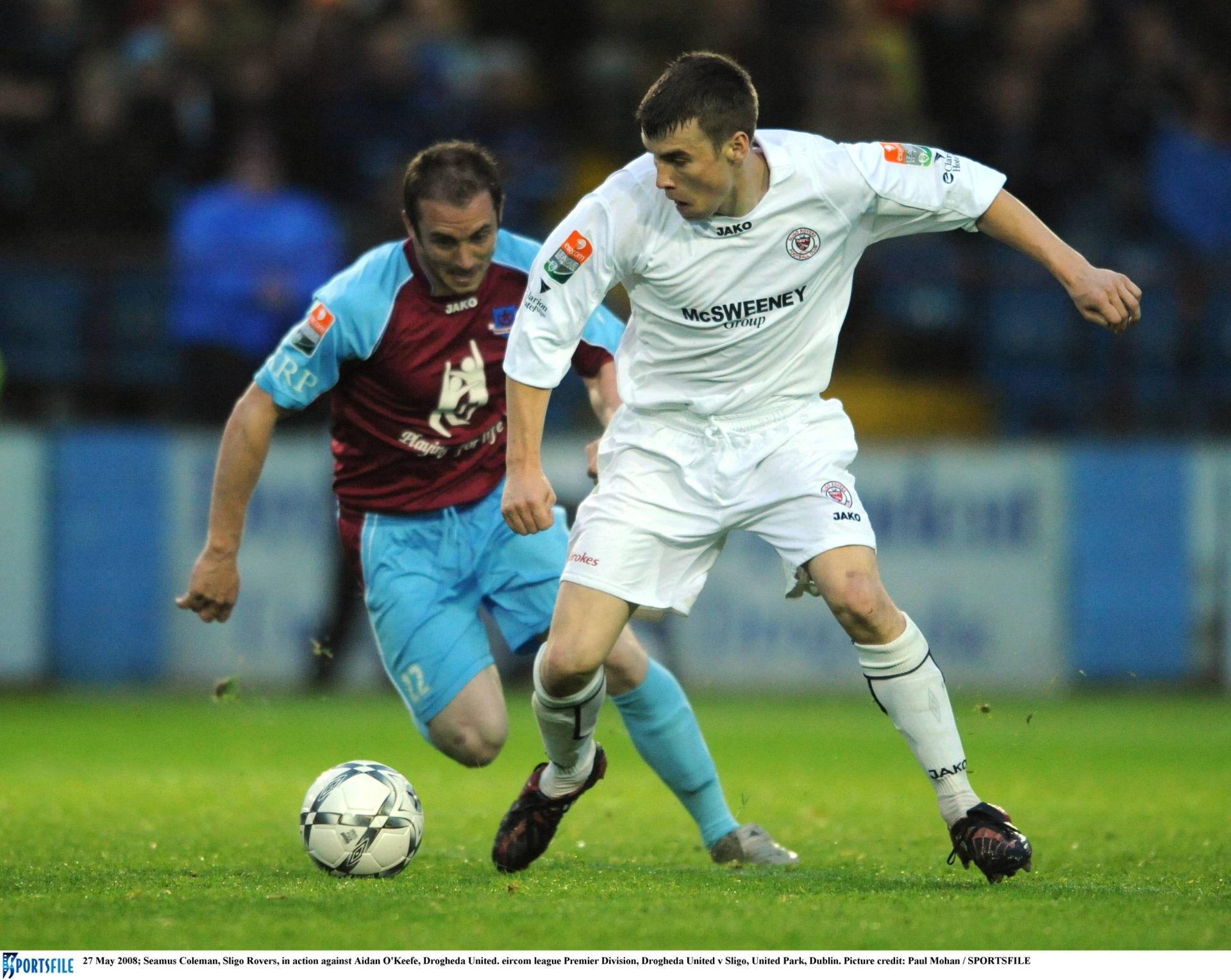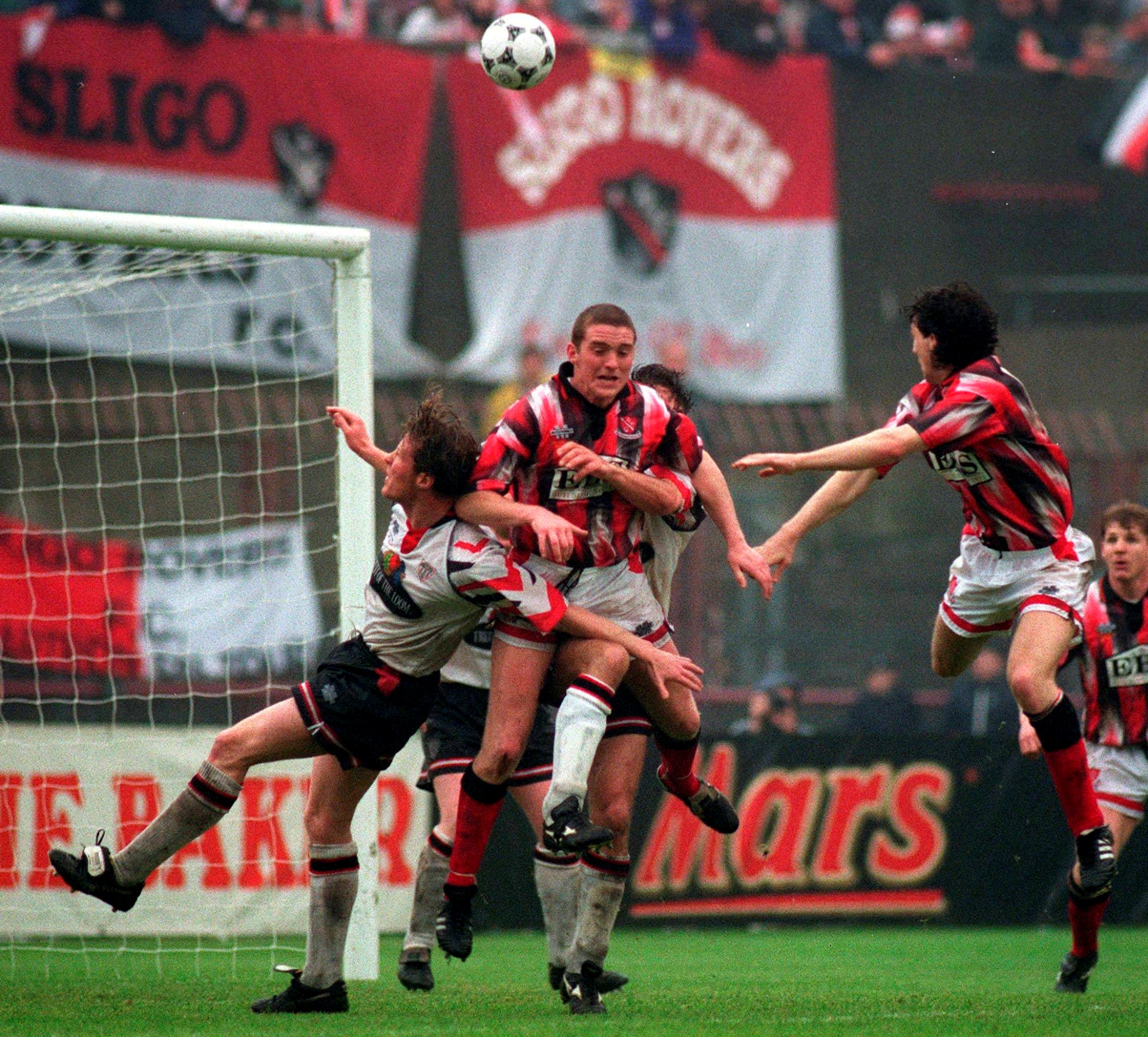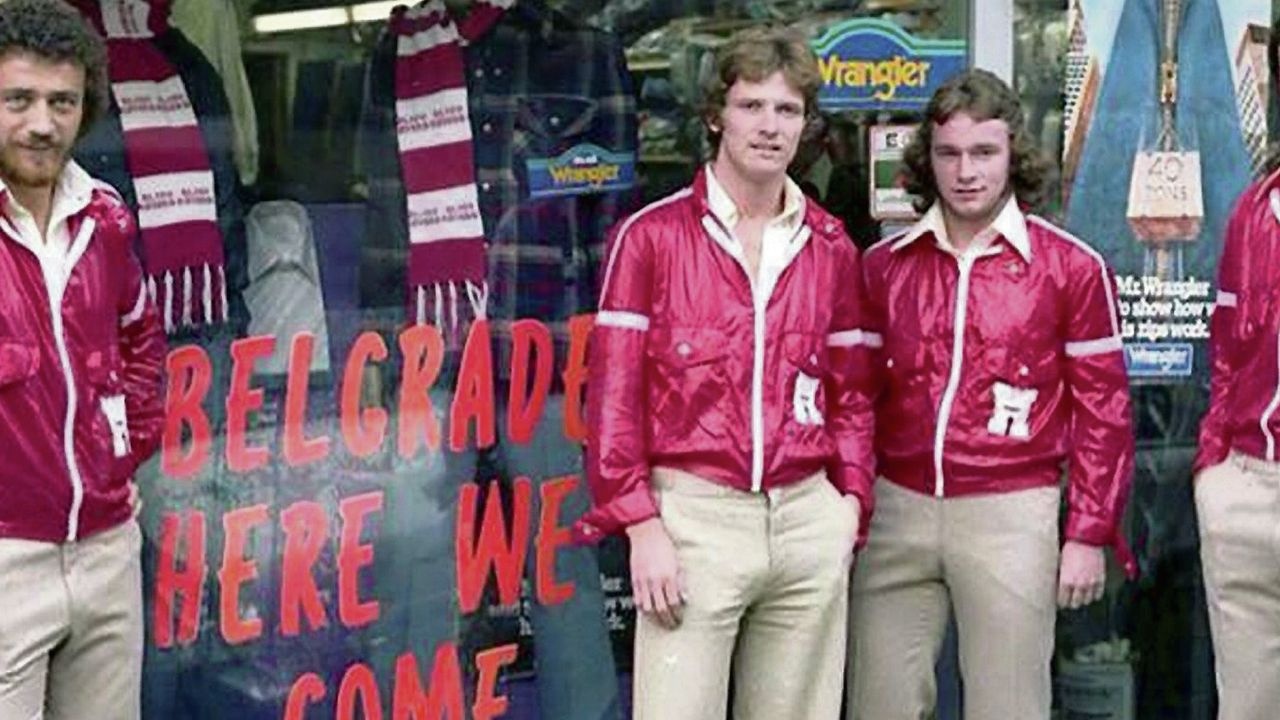
Two South Donegal men Seamus Coleman and Kevin Muldoon faced off against each other last Friday at the Showgrounds in what was Muldoon's debut
It’s the question that has been raised weekly for the past 15 years around the Walton area of Liverpool where Goodison Park, the home of Everton football club stands; has there ever been £60,000 better spent than Everton did on Seamus Coleman back in 2009?
The drumbeats and the screams to such a chant were heard again last Friday evening as the grey skies clouded Sligo Rovers’ Showgrounds in front of 5,000 fans when the Republic of Ireland captain and one of Donegal’s proudest sporting sons led his Premier League side out onto the field that he so proudly graced 61 times between 2006 and 2009.
The Killybegs man’s giant leap of faith into the unknown against his better judgement when he moved across the water to the Toffees, was perhaps one of the greatest sporting moves his home county has ever seen.
“I didn’t expect anything, but the reception I got and it was great,” Coleman said afterward.
“Sligo is a real family club, just like Everton, and I have some great memories here. But it is strange to be back where it all began given what’s happened in my career. It meant a lot to me to be able to get back to play here.”

He was not the first man from the south Donegal region to learn his trade at Sligo Rovers, and he will certainly not be the last, but he is the man that current and future talent look up to and aim to inspire to.
Rewatch Everton’s pre-season 3-3 match with Sligo Rovers last Friday and notice the continuous connection that holds the League of Ireland club to the south Donegal area.
Coleman’s first touch of the ball came after only a minute into the game when a 50/50 pass from Jack Henry-Francis was intercepted by the Ireland and Donegal defender. His battle in front of the dugout on that occasion was against another Donegal man making his Sligo Rovers debut, as teenager Kevin Muldoon from Donegal Town was bundled to the ground.
Muldoon, donning white boots, blonde hair highlights, and the number 63 strapped to his back – who has recently become a well-established sporting head himself around the south Donegal area due to his talents within the football and GAA community – knew that this game would be on the tougher spectrum of professional football debuts.
It in turn ended up being a debut he will never forget as he netted the ball home 12 minutes into the second half to put Rovers 3-1 up in what looked like was going to be a dream win for the ‘Bit O’Red in Sligo’s famous sporting ground.
However, Youssef Chermiti scored in the 84th and 86th minute to salvage a draw for the Premier League side. Beforehand, Luke Pearce and Kyle McDonagh had helped the home side into a 2-0 half-time lead, with Mason Holgate pulling one back for Everton in the 53rd minute.
Muldoon, however, was not alone on the south Donegal front, with two other Donegal men making second-half appearances for Sligo - Colin Mooney from Killybegs and Shane Malone, who is a native of Glenties.
The connection between the club and the Donegal area, sweeping from Bundoran across into Glen, remains as strong as ever.
Another Killybegs man, Declan Boyle, who now serves as the club’s U-19 manager was one of the first from the area to share his region’s chequered past with Sligo Rovers. Having arrived in Sligo in the early 90s to play under Willie McStay’s First Division side, it proved to be a risk worth taking.
The 1993-94 season was a historic one for Rovers with them winning an incredible treble, the most notable of which was defying the odds to win the club's second-ever FAI Cup 11 years after the last and also winning promotion back to the top flight.
“When you talk about the connection between Sligo Rovers and the south Donegal area, it can be a difficult one to understand. Sometimes if you live in an area like Killybegs, it’s nearly easier going to Sligo than Finn Harps because the majority of the time Harps would train in Letterkenny, so the distance is quite similar,” Boyle said.
“Like, everyone’s experience at a club is different, for me, I started with Finn Harps and with the schoolboys' team, but at the time Sligo Rovers had a full-time outfit, despite being relegated that year, but I thought it was a good move for me.
“I suppose when you’re playing with full-time professionals you probably think that you’ll be playing with better quality players, so I took the opportunity and it proved really successful for me because we went on to win a Treble, we got promoted and then we beat Derry City in the FAI Cup final in Lansdowne Road and it ended with me getting that move to Celtic.
“Like at that time in Sligo, it was absolutely mental, it was just a different time. I remember that season started with the turning on of the floodlights at the Showgrounds which happened because the FAI got compensation from Sky Sports so there wasn’t a clash between League of Ireland games and Premier League matches on a Sunday, so the LOI games got moved to Friday.

“It was kind of a new era, but even back then to now, Rovers has always had a loyal fanbase from Donegal and there is a great connection, that has never changed.”
Even before Boyle, the connection with football in the south of Donegal lived strong. Donegal’s All-Ireland winning manager Brian McEniff was once noted to have played one official league game for the club under a false name due to the involvement of the GAA Rule 27, commonly known as ‘the Ban’ which prevented members from playing or watching other, what they called, “foreign sports” such as rugby, soccer or hockey.
But when the Ban was abolished in 1971, football in Donegal flourished, and so entered a superb crop of footballing talent throughout the county.
One standout performer who entered the local football psychic in the mid-70s was Donegal Town’s Marty Kelly who became the youngest ever player to debut in the League of Ireland at 15, a record he still holds to this day at Finn Harps.
But it was at Sligo Rovers where he made his greatest impact. After joining the club in 1977 after a spell across the water at Port Vale, Kelly became a mainstay in the senior squad at 19 when he partook in the club’s European Cup journey behind the Iron Curtain to Red Star Belgrade after Sligo won the Premier League the previous season.
“Playing in a European tournament at 19, I don’t know what my feeling was at the time, but looking back it would be one of the highlights of my career,” Kelly told Donegal Live.
“I was on the bench for the away game to Belgrade and then I played the return leg at the Showgrounds. It would’ve been strange going to a place like Belgrade at the time because of the politics and the Cold War, but we really didn’t to see the area, we went just to a training facility and we stayed there for three or four days.
“I remember they were just a fanatical crowd at the stadium. I think there were 60,000 at the match and they were burning flags and going mad, it was probably nothing like we had ever seen before, but more impressive was the Red Star team itself.

“They were a top team made up of great Yugoslavian internationals and getting the chance to play against them in the return leg was something else. I remember common up against the likes of Nikola Jovanović who later played for Manchester United after that, and Vladimir Petrović who went on to play for Arsenal, so they were an unreal side.”
Kelly’s career would eventually take him to numerous clubs around the British Isles. He would play with some of the great players of his time capturing nine underage international caps, but he always credits Rovers for giving him his shot.
“I think the thing that stands out for me was the fanbase at the time in Sligo,” Kelly admitted.
“The fans even now are fantastic. I go back now and meet the old supporters and they’re just crazy about football. I think they were just so loyal and didn’t treat people as outsiders, if you were in any way good at all the fans will take to you and accept you.”
As the sport grew even stronger across Donegal so too did the root between the south of the county and the Sligo club.
Declan McIntyre would serve as a loyal servant to the ‘Bit O’Red both in the goalmouth and on the sideline as a longstanding coach and manager, while the twin brother of the legendary Packie Bonner, Denis would make numerous appearances at that time too.
By the turn of the century players from the south of the county like Danny Culhane, Liam Martin, Jason Noctor, Ed McGinty, and Jack Keaney amongst others would not only play, but many would shine and lead the club in important times.
But none made a greater impact in the northwest than Coleman, despite the road not being as straightforward for him as it was for so many others.
“I don’t think we thought he would go on to be the star Seamus became being truthful,” fellow Killybegs man Boyle said.
“I would’ve watched Seamus growing up and saw that he had talent, but it can be very hard to identify a player and say he is going to make it as a star because of different reasons.
“Nobody thought Seamus would’ve done as well as he’s done and have the unbelievable career that he has, captain of Ireland and Everton legend. But with a young player, you just don’t know how far they’ll go.”
On the field, he showed himself to be an astute strategist. Off the pitch, he carried a fierce determination to improve. Always, at Coleman's core was an unshakable winning mentality.
“I think with Seamus, he was very comfortable taking on new challenges and embracing those challenges and getting out of that comfort zone. I’ve never seen a young player and immediately say he’s going straight to the top, but what we saw with Seamus was that hunger and desire to work hard every single day and he’s still doing that,” Boyle said.
“He has an incredibly positive mental psychology to come back from so many setbacks like his broken leg and all, and still be willing to have the passion for the thing he loves and if any young player in south Donegal wants to be a top player you have to have that mental strength and will to embrace challenges and work hard.”.
For Sligo Rovers’ three new dynamos from south Donegal – Muldoon, Mooney, and Malone, the connection of club and area, and the blueprint of the past, which many of those past players who'd helped draft it, will be feted for years to come when a new crop of south Donegal players capture the imagination at the Showgrounds.
The ethos between place and club has involved a unique mix of loyal self-sacrifice and intense individual determination, which Muldoon, Mooney, and Malone must carry with them into the future.
The groundwork of the past had been laid for them by the people of their area who were once in their shows. For now, the connected wheel between south Donegal and Sligo Rovers keeps turning.
Subscribe or register today to discover more from DonegalLive.ie
Buy the e-paper of the Donegal Democrat, Donegal People's Press, Donegal Post and Inish Times here for instant access to Donegal's premier news titles.
Keep up with the latest news from Donegal with our daily newsletter featuring the most important stories of the day delivered to your inbox every evening at 5pm.